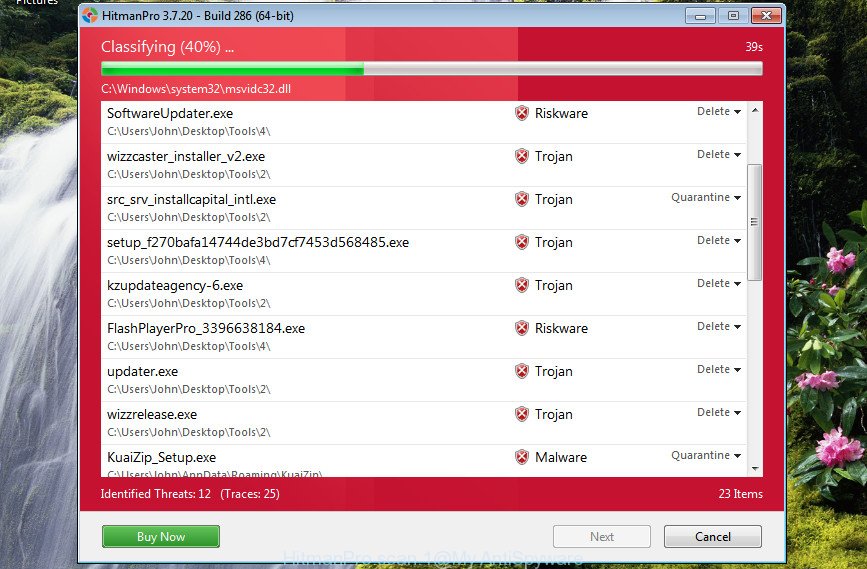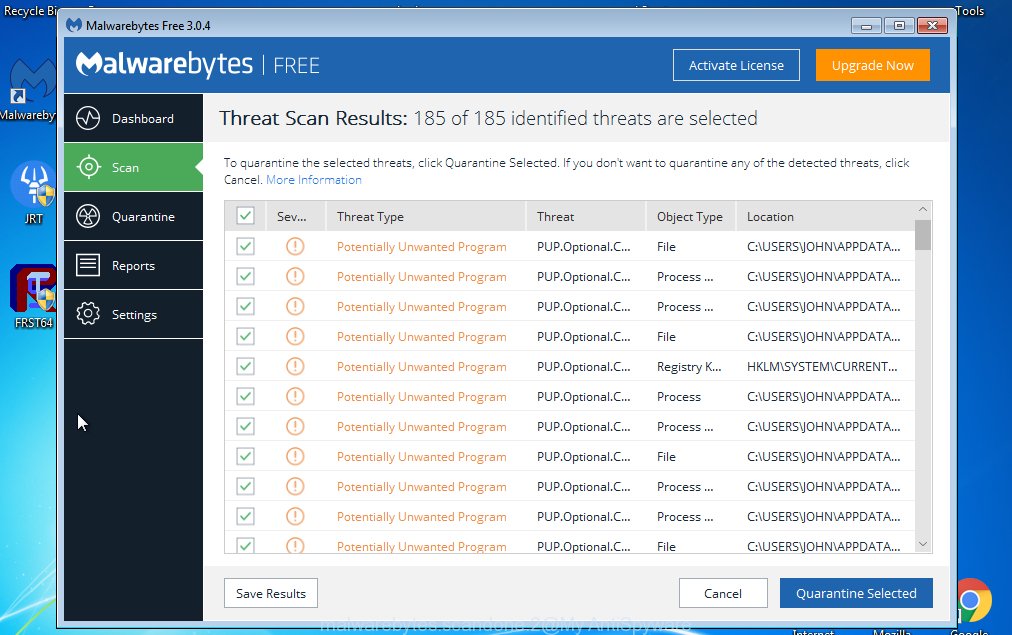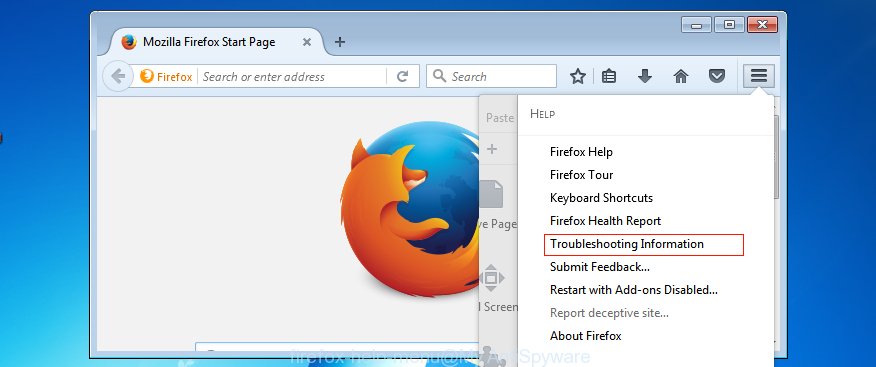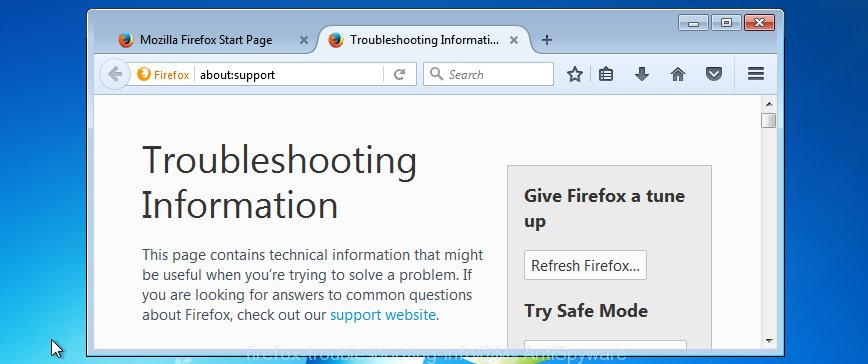What is “Overdue Invoice Email” virus? Cyber threat analysts has determined that the Overdue Invoice Email virus is a trojan that can load other malware (Zbots, ransomware, cryptolocker) on your computer. In many cases, the “Overdue Invoice Email” virus delivered via a malicious attachment (ZIP, PDF or DOC file of various different names (e.g. invoice.pdf)) or link in a phishing email. So, open the attachments that come with the email is a a good chance that you will find a bundled malware.
The phishing email spam looks like:
Good afternoon, I was hoping to hear from you by now. May I have payment on invoice #****** today please, or would you like a further extension? Best regards
or
Morning, I was hoping to hear from you by now. May I have payment on invoice #***** today please, or would you like a further extension? Best regards
Once started, the “Overdue Invoice Email” virus makes changes to the PC settings and configures itself so as to run automatically each time the PC system is turned on. The Overdue Invoice Email virus can send information about your system to a remote malicious hacker; redirect your web-browser to malicious, misleading and spam pages; use your system for click fraud and other dangerous and harmful actions.
And finally, another reason why you need to delete Overdue Invoice Email virus is its online data-tracking activity. It may gather personal information, including:
- IP addresses;
- URLs visited;
- search queries/terms;
- clicks on links and ads;
- web browser version information.
The guide below explaining steps to remove “Overdue Invoice Email” virus problem. Feel free to use it for removal of this virus that may attack Microsoft Windows 10 and other popular versions of Windows OS. The tutorial will also help you revert back your personal computer settings that previously replaced by this virus.
Remove “Overdue Invoice Email” virus (removal steps)
In the steps below, we will try to cover the Microsoft Windows 10 (8, 7, XP) and provide general help to get rid of “Overdue Invoice Email” virus. You may find some minor differences in your MS Windows install. No matter, you should be okay if you follow the steps outlined below: delete all dubious and unknown applications, reset internet browsers settings, run free malicious software removal tools. Read it once, after doing so, please print this page as you may need to exit your web-browser or reboot your computer.
To remove “Overdue Invoice Email”, complete the steps below:
- Remove suspicious apps through the Control Panel of your PC system
- How to automatically delete “Overdue Invoice Email” virus with Zemana Anti Malware (ZAM)
- “Overdue Invoice Email” virus removal guide using the Hitman Pro
- How to remove “Overdue Invoice Email” virus with Malwarebytes
- Remove “Overdue Invoice Email” virus from Internet Explorer
- Remove “Overdue Invoice Email” virus from Mozilla Firefox
- Remove “Overdue Invoice Email” virus from Google Chrome
- Run AdBlocker to stay safe online
- To sum up
Remove suspicious apps through the Control Panel of your PC system
First method for manual virus removal is to go into the Microsoft Windows “Control Panel”, then “Uninstall a program” console. Take a look at the list of applications on your computer and see if there are any questionable and unknown applications. If you see any, you need to uninstall them. Of course, before doing so, you can do an Internet search to find details on the application. If it is a potentially unwanted application, ad supported software or malware, you will likely find information that says so.
Windows 8, 8.1, 10
First, click the Windows button
Windows XP, Vista, 7
First, click “Start” and select “Control Panel”.
It will display the Windows Control Panel as displayed in the figure below.

Next, press “Uninstall a program” ![]()
It will open a list of all software installed on your computer. Scroll through the all list, and delete any questionable and unknown apps. To quickly find the latest installed applications, we recommend sort programs by date in the Control panel.
How to automatically delete “Overdue Invoice Email” virus with Zemana Anti Malware (ZAM)
You can download and use the Zemana Anti Malware for free. This anti-malware utility will scan all the registry keys and files in your computer along with the system settings and internet browser extensions. If it finds any malicious software, adware or malicious plugin then the Zemana Anti-Malware will remove them from your computer completely.
Download Zemana on your Microsoft Windows Desktop by clicking on the following link.
164725 downloads
Author: Zemana Ltd
Category: Security tools
Update: July 16, 2019
When downloading is finished, close all windows on your system. Further, run the set up file named Zemana.AntiMalware.Setup. If the “User Account Control” prompt pops up as displayed below, click the “Yes” button.

It will display the “Setup wizard” that will help you install Zemana Free on the PC. Follow the prompts and do not make any changes to default settings.

Once install is done successfully, Zemana will automatically launch and you can see its main window as displayed on the image below.

Next, click the “Scan” button . Zemana Anti Malware (ZAM) tool will start scanning the whole personal computer to find out the “Overdue Invoice Email” virus and other malicious software and potentially unwanted programs. This task may take some time, so please be patient.

After the system scan is done, Zemana Free will produce a list of unwanted applications adware. In order to delete all items, simply click “Next” button.

The Zemana Free will delete the “Overdue Invoice Email” virus and other security threats and move items to the program’s quarantine. After the process is complete, you can be prompted to reboot your personal computer.
“Overdue Invoice Email” virus removal guide using the Hitman Pro
Hitman Pro is a free utility which can scan for virus and other malicious software and PUPs. It’s not always easy to locate all the junk programs that your PC might have picked up on the Internet. HitmanPro will search for the adware, browser hijacker infections and other malicious software you need to erase.

- Click the link below to download HitmanPro. Save it on your MS Windows desktop or in any other place.
- When downloading is done, double click the Hitman Pro icon. Once this tool is launched, press “Next” button to start checking your PC system for the “Overdue Invoice Email” virus and other malicious software and potentially unwanted applications. Depending on your PC system, the scan can take anywhere from a few minutes to close to an hour. While the tool is checking, you may see how many objects and files has already scanned.
- Once Hitman Pro has finished scanning, the results are displayed in the scan report. Next, you need to press “Next” button. Now press the “Activate free license” button to begin the free 30 days trial to get rid of all malware found.
How to remove “Overdue Invoice Email” virus with Malwarebytes
Remove “Overdue Invoice Email” virus manually is difficult and often the virus is not completely removed. Therefore, we suggest you to run the Malwarebytes Free which are completely clean your machine. Moreover, the free program will allow you to remove malicious software, PUPs, toolbars and ad-supported software that your system can be infected too.

- Download MalwareBytes Free on your Microsoft Windows Desktop from the following link.
Malwarebytes Anti-malware
327001 downloads
Author: Malwarebytes
Category: Security tools
Update: April 15, 2020
- At the download page, click on the Download button. Your browser will display the “Save as” prompt. Please save it onto your Windows desktop.
- After the downloading process is done, please close all apps and open windows on your computer. Double-click on the icon that’s named mb3-setup.
- This will run the “Setup wizard” of MalwareBytes AntiMalware onto your computer. Follow the prompts and don’t make any changes to default settings.
- When the Setup wizard has finished installing, the MalwareBytes AntiMalware will launch and show the main window.
- Further, click the “Scan Now” button to start checking your computer for the “Overdue Invoice Email” virus related files, folders and registry keys. Depending on your machine, the scan can take anywhere from a few minutes to close to an hour. When a malicious software, adware or PUPs are found, the count of the security threats will change accordingly.
- Once the checking is complete, MalwareBytes Anti Malware (MBAM) will show you the results.
- Once you’ve selected what you wish to get rid of from your computer click the “Quarantine Selected” button. Once finished, you may be prompted to reboot the machine.
- Close the Anti-Malware and continue with the next step.
Video instruction, which reveals in detail the steps above.
Remove “Overdue Invoice Email” virus from Internet Explorer
The IE reset is great if your web browser is infected by the “Overdue Invoice Email” virus or you have unwanted plugins or toolbars on your browser, which installed by a malicious software.
First, open the Internet Explorer, then click ‘gear’ icon ![]() . It will open the Tools drop-down menu on the right part of the web browser, then click the “Internet Options” as displayed on the image below.
. It will open the Tools drop-down menu on the right part of the web browser, then click the “Internet Options” as displayed on the image below.

In the “Internet Options” screen, select the “Advanced” tab, then click the “Reset” button. The Internet Explorer will display the “Reset Internet Explorer settings” dialog box. Further, click the “Delete personal settings” check box to select it. Next, press the “Reset” button as displayed on the image below.

When the task is complete, click “Close” button. Close the Microsoft Internet Explorer and reboot your PC for the changes to take effect. This step will help you to restore your web-browser’s search engine by default, startpage and new tab to default state.
Remove “Overdue Invoice Email” virus from Mozilla Firefox
Resetting your Firefox is good initial troubleshooting step for any issues with your internet browser program. However, your saved passwords and bookmarks will not be changed, deleted or cleared.
Start the Mozilla Firefox and click the menu button (it looks like three stacked lines) at the top right of the browser screen. Next, click the question-mark icon at the bottom of the drop-down menu. It will open the slide-out menu.

Select the “Troubleshooting information”. If you’re unable to access the Help menu, then type “about:support” in your address bar and press Enter. It bring up the “Troubleshooting Information” page as shown in the following example.

Click the “Refresh Firefox” button at the top right of the Troubleshooting Information page. Select “Refresh Firefox” in the confirmation prompt. The Mozilla Firefox will begin a task to fix your problems that caused by the virus related files, folders and registry keys. After, it’s done, click the “Finish” button.
Remove “Overdue Invoice Email” virus from Google Chrome
Reset Chrome settings is a simple way to remove changes to web browser settings, harmful and ad-supported software extensions, as well as to restore the browser’s homepage, default search provider and newtab page that have been modified by “Overdue Invoice Email” virus.
First launch the Chrome. Next, click the button in the form of three horizontal dots (![]() ).
).
It will open the Chrome menu. Select More Tools, then press Extensions. Carefully browse through the list of installed plugins. If the list has the extension signed with “Installed by enterprise policy” or “Installed by your administrator”, then complete the following tutorial: Remove Google Chrome extensions installed by enterprise policy.
Open the Chrome menu once again. Further, click the option named “Settings”.

The web-browser will display the settings screen. Another method to open the Chrome’s settings – type chrome://settings in the browser adress bar and press Enter
Scroll down to the bottom of the page and click the “Advanced” link. Now scroll down until the “Reset” section is visible, as on the image below and click the “Reset settings to their original defaults” button.

The Chrome will show the confirmation dialog box as displayed on the screen below.

You need to confirm your action, press the “Reset” button. The browser will start the procedure of cleaning. After it’s complete, the web browser’s settings including search provider by default, startpage and new tab back to the values that have been when the Google Chrome was first installed on your PC.
Run AdBlocker to stay safe online
It is also critical to protect your web browsers from harmful websites and advertisements by using an ad blocking program like AdGuard. IT security specialists says that it’ll greatly reduce the risk of malware, and potentially save lots of money. Additionally, the AdGuard can also protect your privacy by blocking almost all trackers.
Installing the AdGuard is simple. First you’ll need to download AdGuard on your system from the following link.
26825 downloads
Version: 6.4
Author: © Adguard
Category: Security tools
Update: November 15, 2018
After downloading it, double-click the downloaded file to start it. The “Setup Wizard” window will show up on the computer screen as displayed on the image below.

Follow the prompts. AdGuard will then be installed and an icon will be placed on your desktop. A window will show up asking you to confirm that you want to see a quick guidance as displayed below.

Click “Skip” button to close the window and use the default settings, or click “Get Started” to see an quick guidance that will allow you get to know AdGuard better.
Each time, when you launch your computer, AdGuard will start automatically and stop unwanted ads, as well as other harmful or misleading web-sites. For an overview of all the features of the application, or to change its settings you can simply double-click on the AdGuard icon, which is located on your desktop.
To sum up
Now your system should be free of the “Overdue Invoice Email” virus. We suggest that you keep Zemana (to periodically scan your PC for new malware and other security threats) and AdGuard (to help you stop annoying pop-up ads and harmful websites). Moreover, to prevent any malicious software, please stay clear of unknown and third party applications, make sure that your antivirus application, turn on the option to find PUPs.
If you need more help with “Overdue Invoice Email” virus related issues, go to here.




















